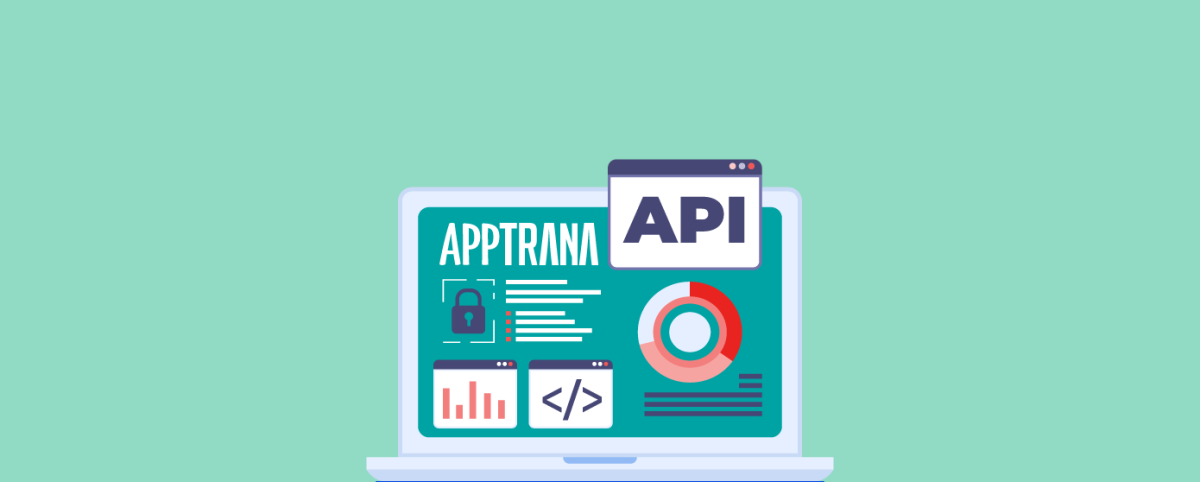11 Best Practices to Secure your Nodejs API
If you are building an API, you are most likely evaluating the pros and cons of available technologies. Sooner or later, you will surely come across NodeJS.
NodeJS helps to create stable, scalable, and backward-compatible APIs. Besides the functionalities, you can’t overlook the security risk that comes with them. Misconfigured, insecure APIs leave your companies with high-profile cyber-attacks.
Like any APIs, those developed with NodeJS come with security threats. NodeJS uses several open-source packages through Node Package Manager (NPM). Around 76% of NodeJS shops employ vulnerable packages. Ultimately, these vulnerabilities will affect the NodeJS web apps and APIs.
So, how to secure NodeJS API? This blog highlights the 11 best practices to ensure secure API in NodeJS.
What is REST API?
REST stands for Representational State Transfer. REST API is a communication approach used in API.
API enables the communication between two applications. REST is the set of rules that API follows to ensure lossless interaction. This special approach aids the integration simple and scalable.
What is NodeJS?
NodeJS is an open-source, server-side runtime environment. It is used to build highly scalable server-side apps. It includes:
- Web applications
- REST API servers
- Real-time chat applications
- Command-line applications
It is a command-line application that runs on development and server systems.
It bundles the V8 JavaScript Chrome Engine with other support codes, network server applications, and other tools. It enables you to run JS on the server and the browser. NodeJS is widely supported across all kinds of hardware and software architectures.
NodeJS offers an event-driven, asynchronous I/O and cross-platform runtime environment. It enables developers to generate dynamic web content using JavaScript and server-side scripts.
Why NodeJS REST API So Popular?
REST APIs that are written using NodeJS are known as NodeJS APIs. Building APIs using NodeJS offers the following benefits:
- Node.js enables full-stack development with JavaScript
- Its event-driven architecture ensures efficient handling of concurrent connections
- The vast npm ecosystem provides pre-built solutions for various functionalities
- Node.js offers high performance and low latency for responsive APIs
- A large and active community provides extensive support and resources
- Well-suited for building scalable and modular microservices architectures
- JavaScript’s native support for JSON simplifies data interchange
- Runs on multiple operating systems, ensuring deployment flexibility
- Easy horizontal scaling allows applications to handle increased traffic
Potential Security Risks to NodeJS API
Node.js APIs, while powerful, face various security risks that developers must address to safeguard against potential vulnerabilities:
Injection Attacks
- SQL Injection: Attackers inject malicious SQL queries through user inputs, potentially leading to unauthorized access or data leakage. Explore SQLi preventive measures.
- NoSQL Injection: Similar to SQL injection, attackers exploit vulnerabilities in NoSQL databases to manipulate queries and access sensitive data.
- Command Injection: Attackers execute arbitrary system commands by injecting malicious input into command execution functions.
Security Misconfiguration:
- Improperly configured security settings, such as default passwords, debug mode enabled, or unnecessary services exposed.
- Lack of proper input validation, error handling, and logging configurations.
Insufficient Rate Limiting and Resource Exhaustion
- Lack of rate limiting mechanisms, allowing attackers to perform brute force attacks, DoS attacks, or API abuse.
- Inadequate protection against resource exhaustion attacks, such as denial-of-service (DoS) attacks, the most recurrent attack in the Nodejs security checklist.
How to Build Secure NodeJS API?
Adopting security best practices from the initial design and development stages is crucial for building secure Node.js APIs.
Let’s cover a comprehensive set of best practices for securing Node.js APIs:
1. Using HTTP Status Codes Correctly
- HTTP status codes convey the outcome of HTTP requests made to your API. It’s essential to use them correctly to provide clear and meaningful responses to clients.
- Proper usage of status codes helps both clients and servers understand the outcome of each request, facilitating error handling and troubleshooting.
- For example, using status code 200 for successful responses, 4xx for client errors (e.g., 400 for bad requests), and 5xx for server errors (e.g., 500 for internal server errors).
2. Using HTTP Methods and API Routes Properly
- Properly defining API routes and associating them with appropriate HTTP methods (GET, POST, PUT, DELETE, etc.) helps maintain the RESTful architecture and ensures predictable behavior.
- Each HTTP method should correspond to a specific action (e.g., GET for retrieving data, POST for creating data, PUT/PATCH for updating data, DELETE for deleting data).
- Design your API routes hierarchically and logically, reflecting the resources and operations exposed by your API.
3. Using Secure Libraries And Source Code
- Utilize well-established and actively maintained libraries and frameworks for building your Node.js API.
- Regularly update dependencies to the latest versions to address security vulnerabilities and benefit from new features and improvements.
4. Avoiding Components With Known Vulnerabilities
- Prioritize components and libraries with a strong security track record and active community support.
- Regularly monitor security advisories and updates for the libraries and dependencies used in your Node.js application.
- Use tools like npm audit or OWASP Dependency-Check to identify and remediate components with known vulnerabilities proactively.
5. Identify and Fix Vulnerabilities Proactively
- For building secure NodeJS APIs, developers must run automated security scans. It discovers all known vulnerabilities and misconfigurations. It must be augmented by automated and manual API security testing.
- Thereby, it detects logical and unknown vulnerabilities. Fixing vulnerabilities early ensures secure APIs go into production.
6. Sanitize and Validate all Inputs
- Developers must ensure that all inputs are sanitized and validated before execution. It effectively secures NodeJS APIs from injection and XSS attacks.
- Choose development frameworks with built-in protection against injection attacks. Also, use libraries that enable input sanitization. Scan and monitor apps and APIs regularly.
7. Stringent Authentication, Authorization, and Access Control
An incomplete or broken authentication is the root cause of breaches. Implement strict authentication, authorization, and access control policies to secure NodeJS APIs effectively. To this end:
- Implement role-based, zero-trust access controls. Hence no one has unrestricted access to API endpoints and the resources they enable.
- Every user trying to access the API endpoint must authenticate themselves.
- The authorization policies should be well-defined and strict. It ensures users can’t change their permission levels. Admins cannot remove themselves.
- API endpoints should only be accessed via secure HTTPS connections
8. Implement Rate Limiting
The lack of resources and rate limiting is an OWASP Top 10 API security risk. As a result, hackers send large request bodies. That can drain your server or crash the application, resulting in DDoS attacks. By implementing rate limits contextually, you can prevent users from abusing Node APIs.
9. Test Error Handling
Developers tend to focus a lot on code handling while developing APIs. They do not have enough time for error handling. Developers must write tests for testing error handling.
- Ensure that you have good error coverage.
- Clearly define and assert expectations.
- Use the right tooling to write error responses if your backend doesn’t create sufficient errors for testing.
- Most importantly, report and document these insights from error handling tests.
10. Set Up Proper Logging and Monitoring
For secure NodeJS API, the goal is to implement security from the beginning. But it requires an ongoing process. Some malicious actors prefer to remain undetected in your system.
For such cases, referring to logging and monitoring metrics will help to spot irregularities.
11. Fully Managed, API-Specific Security Solution
Opt for a fully managed API security solution tailored for Node.js APIs, whether you’re constructing your own or integrating a third-party API.
Ensure the solution is purpose-built for APIs and equipped with robust capabilities, including API discovery to uncover hidden APIs.
It should possess the ability to thoroughly detect and mitigate all API-specific risks, enabling real-time prevention of even the most intricate API attacks.
Stay tuned for more relevant and interesting security updates. Follow Indusface on Facebook, Twitter, and LinkedIn


 April 19, 2024
April 19, 2024






